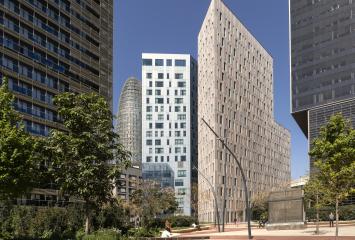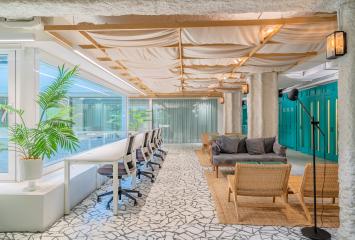Brutalist architecture, a sustainable trend
Brutalist architecture, based mainly on the nudity of materials, especially concrete, as well as on an apparent absence of aesthetic pretensions and the projection of sensations of vastness, was deeply discredited during the 1980s and has since remained dormant while other currents, such as postmodernism or minimalism, gained followers both among architects and the general public. However, as the new architectural literature and some new constructions show, brutalism is awakening again as a potential solution to new urban, social and environmental challenges.
Origin of Brutalism
Historians place the birth of brutalism in the French-Swiss architect Le Corbusier. Specifically in his 1952 residential building known as the Unité d'Habitation, located in Marseille and developed to meet the needs of the working class of the city. A design in which Le Corbusier, through a raw concrete frame, made clear his passion for this material. And from "raw" to brutalism there was only a small step. His building, which could accommodate more than 1,600 people and lacked decorative elements, inspired architects all over Europe. Brutalist designs spread. Especially in the United Kingdom and in the countries of the Soviet Union.
Qualities of Brutalism
Brutalism is articulated around three essential qualities: the use of bare concrete as the main raw material, the design of simple forms and the search for functionality. In fact, its emergence during the post-war period was no coincidence, but took place as a practical and simple response to the urban planning challenges of countries physically destroyed by bombs. Eminently useful buildings had to be built. It was necessary to create homes for people. Thus were born, in addition to the Unité d'Habitation, the Velasca Tower in Milan, the Trellick Tower in London, the White Towers in Madrid and Habitat 67 in Montreal. Everything seemed to be going well. Until voices began to be raised against the movement.
Brutalism in crisis
Human beings are associative animals. We cannot avoid it. And the excessive use of brutalism by the countries of the Eastern bloc meant over the years its popular association with Soviet totalitarianism. Suddenly, and with the help of critical voices such as the British writer Anthony Daniels, who went so far as to say that brutalism "does not age gracefully," the style began to be rejected in academic circles. The working class, which Brutalism was supposed to serve in the beginning, no longer seemed to like it either because of its sober and cold character. The graffiti artists preyed on the brutalist works. Countless of them were demolished and only the most majestic are preserved.
As Brian Goldstein, professor of architectural history at Swarthmore College in the United States, explains, "much of the hatred associated with the style has to do with its directly harmful effects: Brutalist buildings replaced the urban blocks that people came to idealize in the mid- to late 1960s, and as part of block-clearing projects, contributed to social and racial inequality at the heart of urban renewal," as well as being the architectural language of the welfare state, which was gradually stripped bare as imperfect and unable to deliver on all its promises. Those brutish buildings inspired a controversial political discourse. Brutalism seemed to have been overcome.
A new brutalist era
But it wasn't. Recent essays such as This Brutal Word, How to Love Brutalism or SOS Brutalism: A Global Survey have reclaimed the movement and highlighted the appropriateness of its qualities for the challenges of the 21st century. After all, this is no longer the 1980s. Many of the associations that brutalism inevitably carried with it at the time have partially or completely disappeared. And its frugality and economy in the use of materials is environmentally ideal for a historical moment in which reducing the impact on the planet is fundamental, as demonstrated by our commitment to sustainability, channeled through Colonial's Sustainability Decalogue.
But brutalism is also resurfacing as an emotional issue. According to architectural journalist Brad Dunning, Brutalist buildings are rigid, very durable and "can't be easily remodeled," providing permanence and consistency in a postmodern, chaotic world where most things are transient. We need anchors. However, this resurrection is not pure, but comes wrapped in airs of renewal. Neobrutalism is not only interested in creating better buildings and societies for people: it is also interested in creating better buildings and societies for the Earth, its habitats and the animals that inhabit them. Architecture evolves to respond to different realities. And sometimes to evolve is to look t

